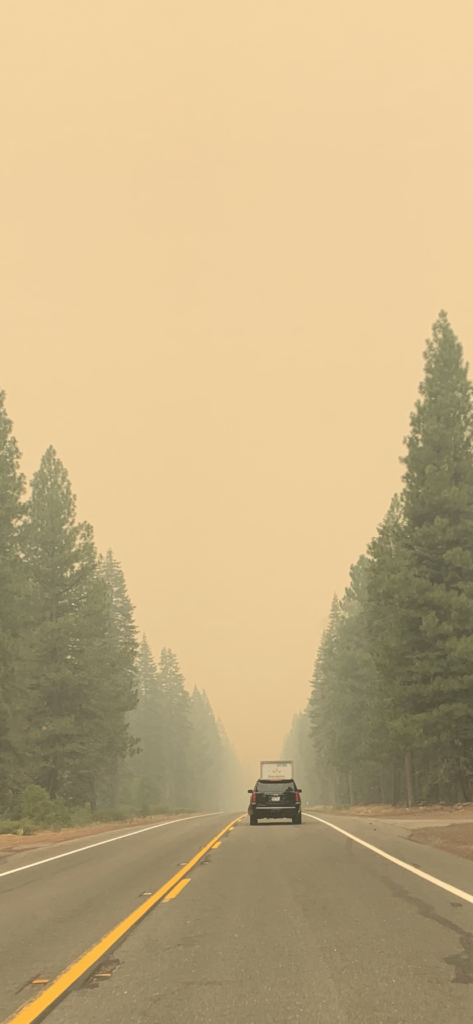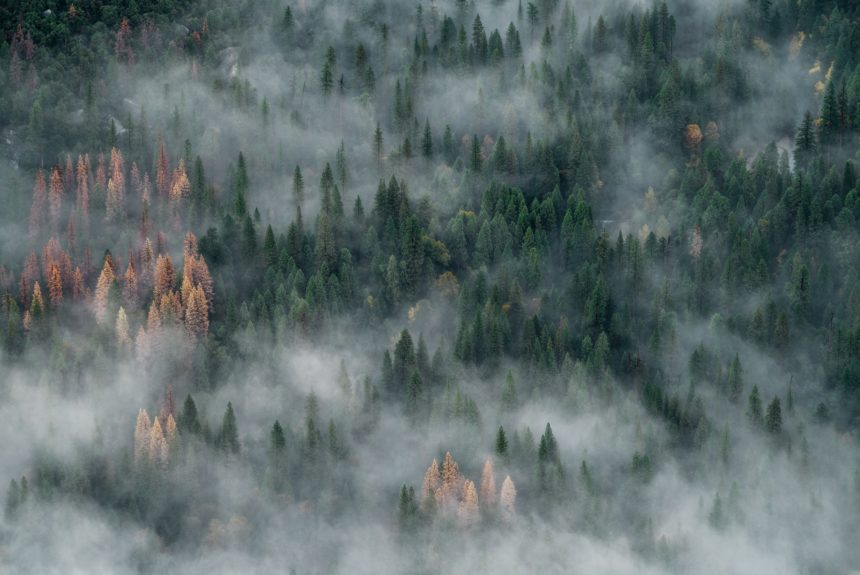We’ve become quite accustomed to seeing people wearing masks over the past year and a half, particularly indoors and in crowded areas. On a recent trip through northern California and across Oregon, I saw many mask wearers outdoors in sparsely populated areas. Whether in a park or on a trail, people chose to mask up. The reason, however, was not because of COVID-19 but to protect against poor air quality caused by wildfires.
The 2021 wildfire season has devastated the livelihoods of families and business owners across several states. Tens of thousands of others are on high alert. The Dixie Fire is the single largest fire in California’s recorded history. It has burned an area nearly the size of Rhode Island, taking 1,259 structures, 679 homes and 8 multi-family buildings with it. In a bit of welcoming news, containment increased to 40 percent, and a streak of good weather should help fight the fire. County officials have lifted mandatory evacuation orders for several communities but many towns throughout both states remain on notice. Another fire, the Caldor Fire, has grown to over 100,000 acres, forced more than 24,000 evacuations and is headed toward Lake Tahoe. Even Minnesota is grappling with the state’s largest wildfire.
When I drove through Lassen National Forest in upstate California, it felt apocalyptic. Regrettably, for many families, it was personally apocalyptic – destroying their homes, possessions and communities in what must have felt like the blink of an eye. In the worst case, these wildfires don’t just claim livelihoods but actual lives of the people living in the areas affected and the brave firefighters and responders working to minimize the fire’s damage.

Many factors explain why wildfires have gotten worse and why wildfire seasons are longer. Climate change has made the west hotter and drier, and it also affects wind strength and patterns, soil moisture and precipitation events.
The largest and most pressing issue, though, is the fuel load of many forests. The fuel load consists of many dry shrubs and trees (exacerbated by invasive species). When a fire has a full fuel load, the fire races up the trees and rages across the canopy. Kat Dwyer of the Property and Environment Research Center (PERC) noted that “According to a study led by Forest Service scientists, climate change accounts for just 14 percent of the influence on more destructive wildfires. The report further notes that live fuel was the largest factor, accounting for 53 percent. Fire weather and topography are other major contributing factors.”
Proactive forest management through prescribed burns or timber harvesting dramatically reduces the fuel load and consequently, the severity and intensity of fires. Brian Hickey, a reporter for KCRA 3 News in Sacramento recently visited an area of El Dorado National Forest affected by the Caldor Fire. Forest managers mechanically thinned the Forest and cleaned up the brush on the floor. As a result, the fire burned only at the base of the tree instead of spreading from treetop to treetop (video below).
While the federal government and states have taken some steps to reduce wildfire risk through forest management, much more should be done. For instance, federal and state policies can delay or prevent the use of forest thinning or prescribed burns. Both processes must go through a lengthy approval process and could be subject to the National Environmental Policy Act and Endangered Species Act.
Prescribed burns must meet federal, state, and local air quality standards, which limits the days for forest managers to conduct them. The alternative of a wildfire makes air quality, pollution and increased emissions much worse. Even if a forest management plan secures the permits, litigious activists may block the project from moving forward. A 2021 report by PERC details 8 policy recommendations to improve the health of forests and reduce the intensity and severity of wildfires. They include:
Encourage Collaboration Rather Than Conflict
1. Make categorical exclusions easier to apply and expand acreage limits.
2. Avoid analysis paralysis by limiting Endangered Species Act consultations to projects with on-the-ground impacts on protected species.
3. Make litigation less disruptive by requiring lawsuits to be filed quickly and clarifying how fire risks and forest health should affect injunction decisions.
4. Allow prescribed burns to be excluded from state emissions calculations.
Increase the Forest Service’s Ability to Partner with Others
5. Scale up public-private partnerships by empowering the Forest Service to enter longer-term contracts and cooperative agreements.
6. Allow the Forest Service to be a “Good Neighbor” through longer, more flexible partnerships with states, tribes, and counties.
Open Markets
7. Promote innovative wood markets by establishing a Forest Service restoration fund for long-term cost-share partnerships.
8. Open timber markets for export.
We cannot ignore the current and future impact of climate change on wildfires and other extreme weather events. But focusing solely on climate change misses the forest for the trees. If we ignore forest management and restoration, we’ll have far fewer of them. And we’ll continue to unnecessarily put peoples’ lives and livelihoods in harm’s way.
The views and opinions expressed are those of the author’s and do not necessarily reflect the official policy or position of C3.
